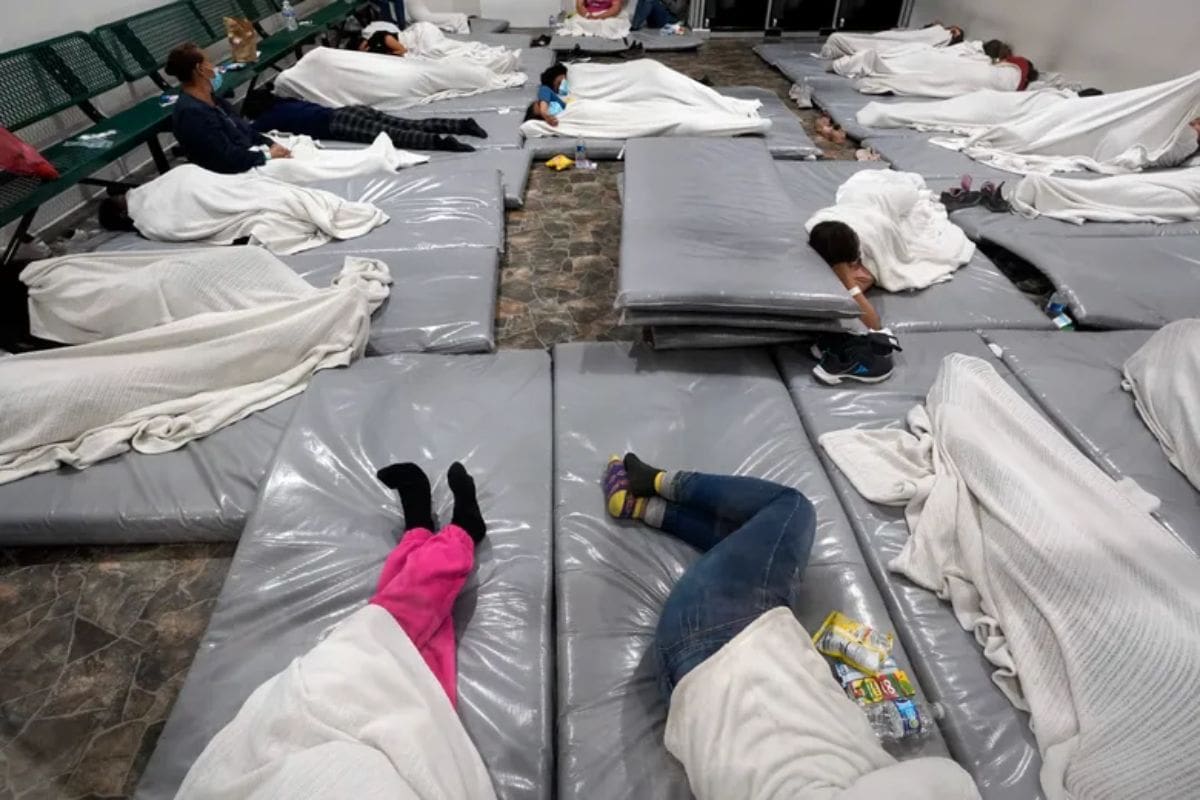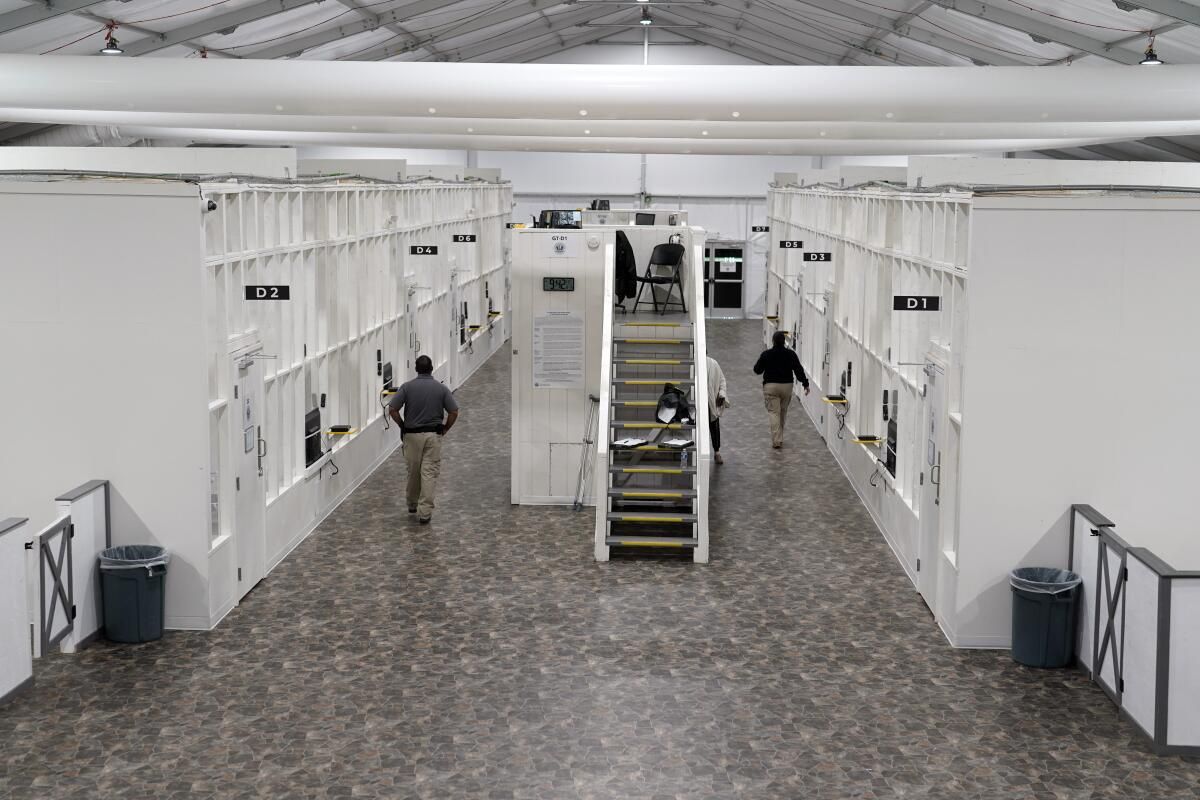Limited Impact of US Asylum Restriction: The intersection of a strained border budget and the limitations imposed on asylum seekers in the US has raised concerns about the efficacy of current immigration policies. As Border Patrol resources are stretched thin, the ability to enforce asylum limits effectively comes into question, potentially compromising national security objectives.
The impact of these challenges on the broader immigration landscape raises critical issues that demand attention and analysis. In light of these complexities, stakeholders are left to ponder the future implications of this delicate balance between policy intent and operational reality.
Border Patrol Efficiency in Migrant Releases Near Tucson
Demonstrating a streamlined migrant release process near Tucson International Airport, the Border Patrol’s efficiency measures aim to reduce time spent in custody while raising concerns about the absence of asylum officers for initial screenings. The setup of tents near the airport serves as a key component in expediting the release process for migrants apprehended at the border. By processing individuals quickly through initial screenings, the Border Patrol seeks to alleviate overcrowding in holding facilities and expedite the transfer of individuals to appropriate care or processing centers.
However, the absence of asylum officers conducting these initial screenings poses a significant challenge. Without these officers present, questions arise regarding the thoroughness and accuracy of the asylum determinations made during this critical stage of the process. This absence could potentially result in individuals being improperly categorized or having their claims inadequately assessed, leading to potential legal and humanitarian issues down the line. As such, the efficiency of the release process must be balanced with the need for comprehensive and accurate initial screenings to ensure the fair and lawful treatment of migrants.

Strained Budgets and Failed Spending Plan
The failure of the $20 billion spending plan on border security has led the administration to reassess its priorities amidst a $700 million budget gap facing ICE, which is considering cuts to detention beds and deportation flights.
The unsuccessful package aimed to bolster resources by adding asylum officers, but encountered significant obstacles. The strained budgets and failed spending plan have put a strain on ICE’s operations, forcing difficult decisions about resource allocation. Cutting detention beds and deportation flights could have far-reaching implications for immigration enforcement and border security efforts.
This budget shortfall highlights the challenges in adequately funding crucial agencies like ICE to address the complex issues surrounding immigration and asylum processing. The need for effective border security measures remains critical, but without sufficient funding and a coherent spending plan, the impact of US asylum limits and broader immigration policies could be severely undermined.
As ICE grapples with these financial constraints, the effectiveness of its operations may be compromised, potentially affecting its ability to fulfill its mandate in safeguarding the nation’s borders and enforcing immigration laws.
Higher Screening Standard and Limited Impact
With the $20 billion spending plan on border security falling short and a $700 million budget gap looming over ICE, the implementation of a higher screening standard by asylum officers faces significant challenges due to staffing constraints, revealing a disconnect between policy ambitions and financial limitations.
Asylum officers have been directed to apply a more rigorous screening process to individuals crossing the border unlawfully from other countries. However, the effectiveness of this directive is hampered by the lack of sufficient staff to carry out thorough screenings. The current understaffing issue not only impedes the timely processing of asylum claims but also raises concerns about the quality and accuracy of the screenings being conducted.
This discrepancy between the intended screening standard and the practical limitations imposed by staffing shortages highlights the complexities and obstacles faced in translating policy objectives into effective implementation on the ground. As a result, the impact of the higher screening standard is significantly limited, illustrating the challenges posed by inadequate resources in achieving desired outcomes in the realm of border security and asylum processing.

Limited Scope of Higher Screening Standard
Despite the hailed success of the higher screening standard, the limited scope of its application raises concerns about the effectiveness of asylum processing at the border. Currently, only a small fraction of arrests undergo this heightened scrutiny due to resource constraints, resulting in a bottleneck that undermines the goal of enhancing security and efficiency in asylum procedures. The allocation of resources plays a pivotal role in determining the extent to which this standard can be implemented and its impact maximized. Without the necessary budgetary support, the potential benefits of the higher screening standard may not be fully realized, leaving gaps in the asylum processing system.
| Challenges | Implications | Recommendations |
|---|---|---|
| Limited resources for screening | Potential security risks | Increase funding for expanded screening |
| Inadequate staffing levels | Delayed processing times | Recruit and train more personnel |
| Lack of infrastructure for comprehensive screening | Missed identification of security threats | Invest in technology and facilities |
| Inconsistent application of screening standard | Inequality in asylum processing | Establish clear guidelines and protocols |
Advocacy for Comprehensive Solutions Amidst Disappointment
Amidst Supervisor Desmond’s expressed disappointment over the recent motion on immigration reform, the pressing need for advocating comprehensive solutions to tackle immigration challenges is underscored. Supervisor Desmond’s dissatisfaction reflects a growing sentiment among policymakers and advocates who recognize the limitations of piecemeal approaches in addressing the complex issues surrounding immigration.
Comprehensive solutions encompass a wide range of measures, including but not limited to policy reforms, increased resources for border security, streamlined asylum processes, and enhanced diplomatic efforts with sending countries to address root causes of migration.
Advocates for comprehensive solutions emphasize the interconnected nature of immigration challenges, arguing that a holistic approach is essential to create lasting and effective change. By addressing underlying factors such as economic instability, violence, and lack of opportunities in migrants’ countries of origin, comprehensive solutions aim to reduce the pressures that drive individuals to seek asylum in the United States.
While disappointment may linger over recent setbacks in immigration reform, the call for comprehensive solutions remains resolute in its pursuit of a more sustainable and humane immigration system.

Also Read: San Diego County Urges Biden Shut Border Now! What’s Next?
News In Brief
The strained budget for border security and failed spending plans have raised concerns about the efficacy of US immigration policies. Border Patrol’s efficiency in releasing migrants near Tucson is impacted by the absence of asylum officers during initial screenings, potentially compromising accuracy. The failure of a $20 billion spending plan has forced ICE to consider cuts, affecting asylum officers and enforcement. The higher screening standard faces limitations due to staffing constraints, highlighting a gap between policy ambitions and financial realities. Advocates stress the need for comprehensive solutions, recognizing the interconnected nature of immigration challenges and the importance of addressing root causes for lasting change.”
Our Reader’s Queries
What happens to asylum seekers at the US border?
Upon approval of asylum, detained asylum seekers will be released. Subsequently, successful asylum applicants can seek lawful permanent residency after about one year and may initiate the naturalization process for citizenship five years thereafter.
What caused the US border crisis?
During the Obama administration in 2014, the United States declared a border crisis, responding to an increase in unaccompanied minors and women traversing checkpoints. The southern border of the US had faced ongoing challenges in implementing policies to mitigate immigration-related tragedies.
Is it illegal to cross the US border to seek asylum?
Certainly, pursuing asylum is a lawful act. Individuals seeking asylum must be present in the United States or at a designated port of entry, such as an airport or an official land crossing, to initiate the process of applying for asylum. According to Byrne, there is no pre-approval mechanism for requesting a visa or any form of authorization specifically for the purpose of seeking asylum.

